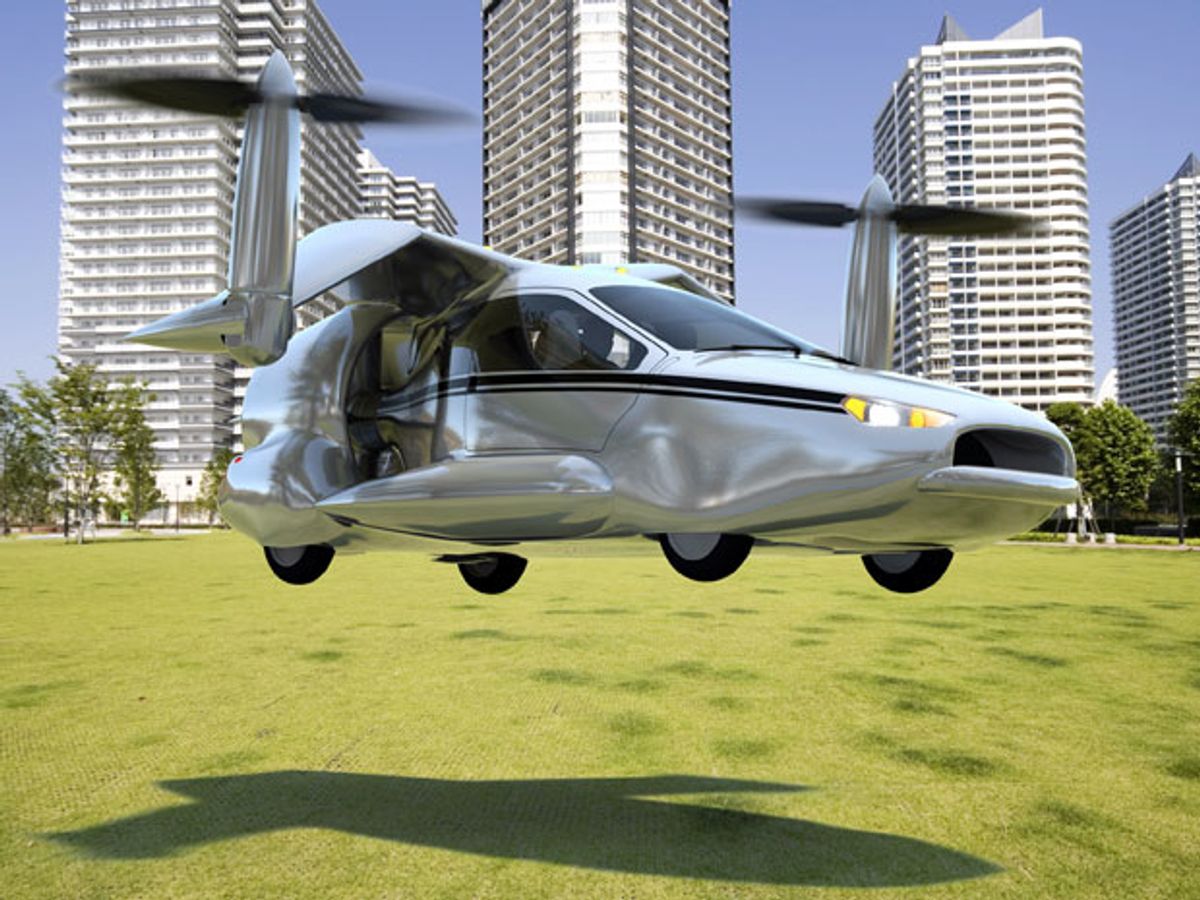Savvy collectors invest in a classic car in time for the poor boys who originally lusted after them to become old and rich. Fifteen years ago would have been a good time to buy a 1967 Corvette.
Silly investors, on the other hand, prefer to develop classic technologies—the inventions that yesterday's world thought would dominate tomorrow's. Think household robots, videophones and flying cars.
Now at least you can say that robots do indeed vacuum and computers do allow you to Skype. Flying cars, though, always seem just out of reach, a flight of whimsy we owe mostly to the 1960s television cartoon show, "The Jetsons." If even an amphibious car tends to do poorly at its surf-and-turf jobs, what would you expect of a flying car?
The leading name in the flying-car business is Terrafugia, a Massachusetts-based company founded in 2006. Back then it said it would be selling hundreds of units in just a couple of years, and IEEE Spectrum predicted it wouldn't. We were right. Now the company speaks of selling a model in 2015 or 2016 that looks less like a flying car than a $US 200 000-plus "roadable" airplane.
Then there are those who prefer the idea of a personal helicopter. As the New York Timesreports, the European Union has just spent US $4.7 million on “MyCopter,” a feasibility study for commuter helicopters that might rely on extensive automation. That would let you leapfrog traffic jams, though as the pilots say, the slightest mishap could ruin your whole day.
Of course, the idea will only get off the ground if the big automakers buy into it, as they have recently done with self-driving cars. Two straws in the wind this week say it just might happen.
First, Toyota, arguably the world's leading auto maker, told Jalopnik that it was working on a hover car. Next, Elon Musk told Britain's Independent that flying cars were not out of the question. (Very little is, for Musk; last year he suggested shooting commuters from city to city in partially evacuated tubes.)
Toyota is not speaking of a high-flier, just the possibility of putting a very thin cushion of air between the car and the pavement. The goal is to eliminate rolling friction and thus save fuel.
How to do that remains unclear. You could put skirts around your car's lower extremities and use fans to push air into the enclosed space, like a naval hovercraft, but that might burn more fuel than your friction-free movement saves. Or you could rely on a shaped body to funnel oncoming air underneath, but then you'd achieve micro-liftoff only at high speed. In either case, your car's feet aren't on the ground, and that could make it hard to stop and to turn.
Formula 1 race cars have manipulated air both with fans and with shaped underbodies in order to create what's called a ground effect. But here the point is not to lift off the ground but to stick to it all the harder, so the wheels can move the car—as they were intended to.
Philip E. Ross is a senior editor at IEEE Spectrum. His interests include transportation, energy storage, AI, and the economic aspects of technology. He has a master's degree in international affairs from Columbia University and another, in journalism, from the University of Michigan.



